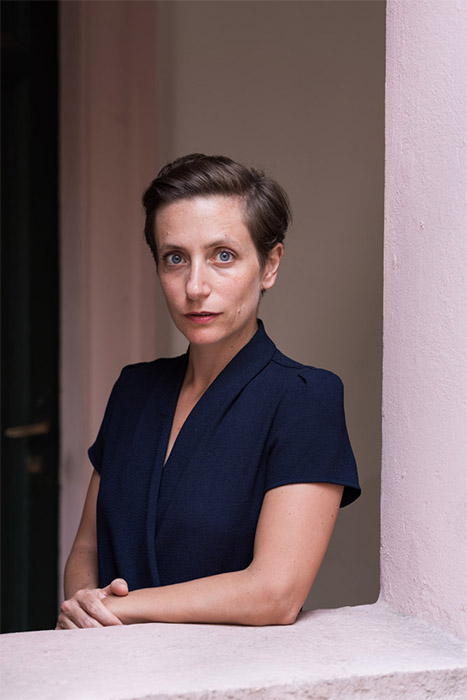Africa the Brave
The Dark Continent comes to Italy

left to right: Cotonou, Benin Photo: Monica Coralli Wasserfall Munting Architects, Offices for Bührmann & Partners, Windhoek, Namibia, 2010 Midrand, Gauteng Province, South Africa Photo: Michael Poliza Kisumu, Kenya Photo: Michael Poliza Nouackchott, Maur
How opportune that the African continent has been imported to Italy for a spell! Even if people already know about the changes going on there, or think they do, this is advantageous. Because once the same information is placed in a familiar context, things are seen in a different light. One way or another, those who visit the Triennale in Milan this year are gifted the experience of immersing themselves in the exhibition and all its trimmings. With architecture in focus, the presentation simultaneously addresses the state of development of the many and diverse countries that make up its landmass. DAMN° provides a taste of what to expect.
Upon entering the exhibition AFRICA – Big Change Big Chance at the Triennale di Milano, visitors are greeted by a song: Indépendance Cha Cha, a melody that symbolises the struggle for independence in the Congo. It is not a martial hymn, but rather a joyful anthem to freedom and to the future. In this spirit, the show opens with the assumption that big changes are happening to the planet, and most especially in Africa. These are challenges seen more as opportunities than problems, the chance to build a new and sustainable modernity
In particular, this exhibition focuses on the phenomenon of urbanisation in Africa and on the solutions provided by architecture. According to estimates, Africa’s urban population will have exceeded that of Europe by 2030, with 748-million people living in big cities versus 685 million in Europe. A megalopolis like Cairo will have a population of almost 15 million in 2025; Lagos, nearly 19 million. Controlling and representing these numbers is the starting point for planning the future. The first part of the exhibition is dedicated to this idea, and features infographics to illustrate issues such as climate change, linguistic diversity (in Africa, more than 2,000 languages are spoken), health issues, and education.
A large part of the presentation deals with modern architecture in Africa, displaying – in chronological order – the projects that show the history of African architecture as a continuous push-pull between innovation and tradition, local culture and colonisation. It begins in the 1940s and 50s, when Africa was seen as a ground for experimentation by architects trying to adapt modernist theories to the difficult climatic and social conditions. In the 1960s, African countries obtained independence and governments promoted local architects to emancipate them from colonial control. In the 1970s and 80s, the emotional fervour of previous years clashed with the hard reality – namely, the dictatorial tendencies of many governments, the difficulties of economic development, and the question of humanitarian assistance.
The most recent proposals show how the architecture reacts to questions like the rapid modification of urban spaces and climate change. The Makoko Floating School by the Nigerian studio NLÉ, for example, is a prototype floating structure built for an historic water community; its aim is to generate a sustainable, ecological, alternative building system and an urban water culture for the teeming population of Africa’s coastal regions. Other projects have succeeded in improving degraded environments, as is the case with Inkwenkwezi Secondary School by South African Noero Wolff Architects, built in 2007 in the township of Dunoon; this has had a positive impact on the area, serving as a landmark building for the young local community.
Also addressed here is so-called ‘Continental architecture’, those infrastructures that transform the territory beyond the urban scale, like dams, solar plants and wind farms, impacting the whole continent, with consequences on a global level. For instance, the Great Green Wall, which aims to stop desertification; the Transport Plan to create equilibrium among populations and resources; and the Volta River Project, to realise the largest artificial lake in the world and produce energy using hydropower.
A series of artworks by African photographers are also included, displayed along the right perimeter of the exhibition space. They are not simple representations of the cities and their architecture, but attempts to interpret the new reality of the city and its population through the eyes of photographers. Finally, the tables on which the projects are presented at the Triennale are made of various sustainable materials that will be reused after the show in Milan finishes, to build prototypes of new buildings in Africa. From theory to practice. ‹
 From top to bottom, left to right: A small village just a few metres from the Kenyan border, Tanzania Photo: Michael Poliza Energoprojekt, Lagos Trade Fair, Lagos, Nigeria, 1976 Cape Town Stadium in Green Point, South Africa Photo: Michael Poliza Suguta V
From top to bottom, left to right: A small village just a few metres from the Kenyan border, Tanzania Photo: Michael Poliza Energoprojekt, Lagos Trade Fair, Lagos, Nigeria, 1976 Cape Town Stadium in Green Point, South Africa Photo: Michael Poliza Suguta V
 Skhayascraper, 2014. Photo: Justin Plunkett.
Skhayascraper, 2014. Photo: Justin Plunkett.
 Relocation of the Abu Simbel Temple, Egypt, 1964-72, Joint Venture Abu Simbel.
Relocation of the Abu Simbel Temple, Egypt, 1964-72, Joint Venture Abu Simbel.
 Grande Muraille Verte, 2013. Photo: Axel Ducorneau
Grande Muraille Verte, 2013. Photo: Axel Ducorneau
 Makoko Floating School, Lagos, Nigeria, 2012, by NLÉ Architects
Makoko Floating School, Lagos, Nigeria, 2012, by NLÉ Architects
 Cathedral Peak Nature Reserve, South Africa Photo: Michael Poliza.
Cathedral Peak Nature Reserve, South Africa Photo: Michael Poliza.
 This article appeared in DAMN°47. Order your personal copy.
This article appeared in DAMN°47. Order your personal copy.

